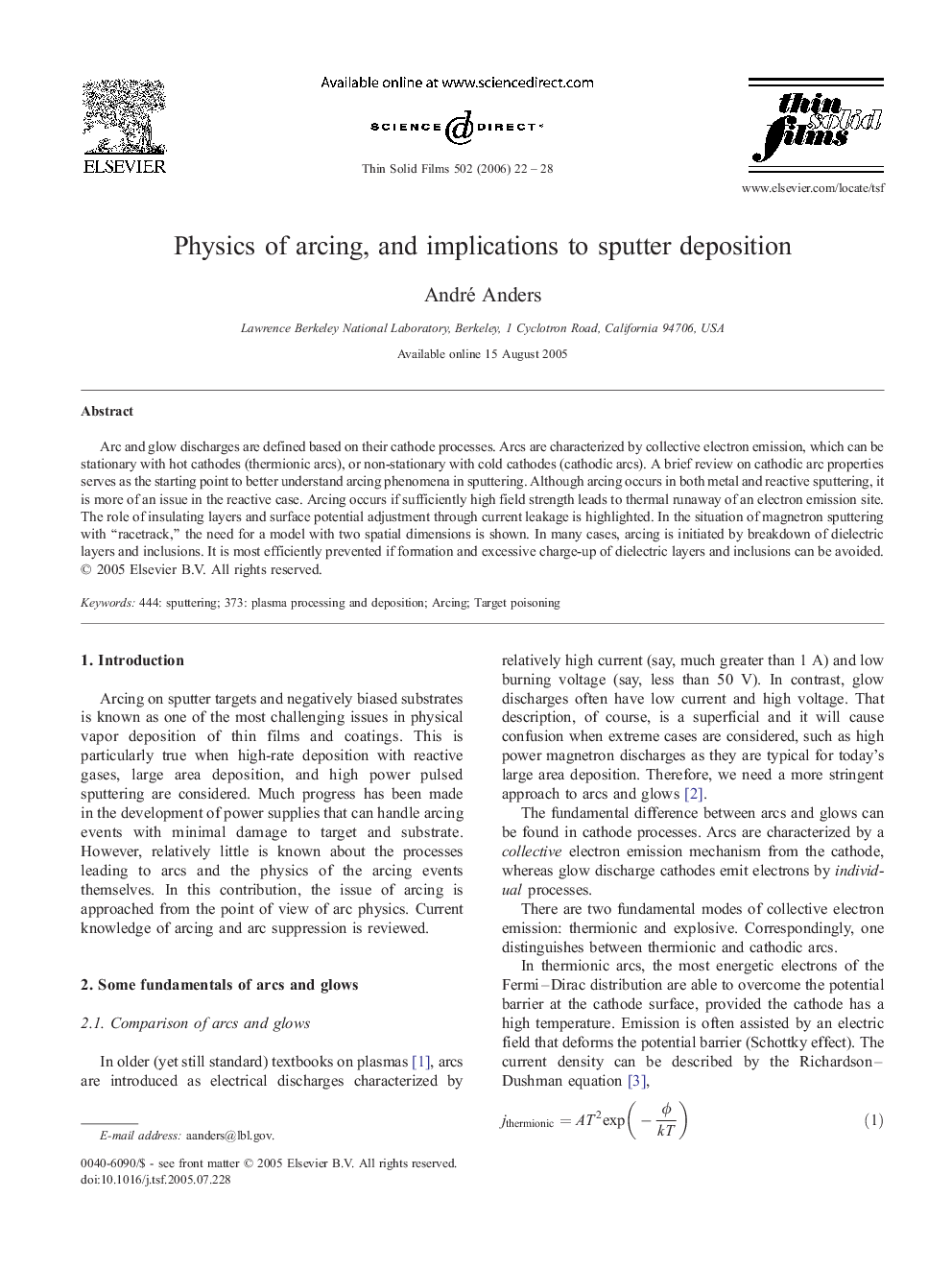| Article ID | Journal | Published Year | Pages | File Type |
|---|---|---|---|---|
| 1673650 | Thin Solid Films | 2006 | 7 Pages |
Arc and glow discharges are defined based on their cathode processes. Arcs are characterized by collective electron emission, which can be stationary with hot cathodes (thermionic arcs), or non-stationary with cold cathodes (cathodic arcs). A brief review on cathodic arc properties serves as the starting point to better understand arcing phenomena in sputtering. Although arcing occurs in both metal and reactive sputtering, it is more of an issue in the reactive case. Arcing occurs if sufficiently high field strength leads to thermal runaway of an electron emission site. The role of insulating layers and surface potential adjustment through current leakage is highlighted. In the situation of magnetron sputtering with “racetrack,” the need for a model with two spatial dimensions is shown. In many cases, arcing is initiated by breakdown of dielectric layers and inclusions. It is most efficiently prevented if formation and excessive charge-up of dielectric layers and inclusions can be avoided.
